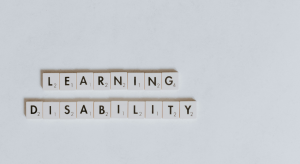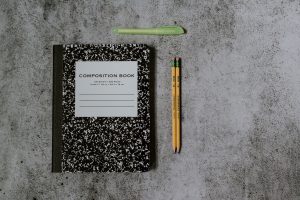
As a mother to a child with both ADHD and dyslexia, and another child who is autistic, what I want to tell you straight away is, this article is for you. If you don’t have a child with a learning disability, this article is definitely for you.
The only way any small population can expect change is to educate and encourage those not affected.
What Is a Learning Disability?
A learning disability is a neurobiological difference that affects a person’s ability to acquire oral language, reading, written language, and mathematics. It can also affect a person’s executive functioning. A learning disability is present from birth, and it is lifelong.
Related Read :: The Neurodivergent Vacation :: Traveling with an Autistic Child
The perception is that only children have learning disabilities, or that they outgrow their disabilities. The reality is that children with learning disabilities will either learn techniques to mitigate their disability, or they will consistently underperform into adulthood. Some of the most recognized learning disabilities are dyslexia, dysgraphia, dyscalculia, auditory and visual processing disorders, and nonverbal disorders.
What Is Not a Learning Disability?
Intellectual disabilities are not learning disabilities. Genetic conditions, such as down syndrome, fetal alcohol spectrum disorder, and fragile X syndrome, are examples of intellectual disabilities.
Movement disorders, such as Parkinson’s Disease, Tourette syndrome, and cerebral palsy, are not learning disabilities, and neither are other physical disabilities, such as blindness or deafness.
Poverty, linguistic, and cultural differences, and behavior issues are also not learning disabilities. Lack of education or poor educational instruction, although not helpful, does not result in a learning disability.
This surprises some people, but ADHD, ADD, and autism spectrum disorder are also not learning disabilities. It can get confusing, I know. The reason so many people assume these disorders are learning disabilities is that as many as 50 percent of those with ADHD or ASD also have a learning disability.
Related Resource :: Guide to Kiddos with Differences & Disabilities
Dyslexia is common in children with ADHD. My son has dyslexia and ADHD. Because autism is a communication disorder at its core, it’s not surprising that many autistics have auditory processing or nonverbal disorders. In the last decade, there’s even been some chatter about whether an IQ over 140 is a learning disability on its own, given the extremely high rates of comorbid disabilities within the group.
The big takeaway here is that learning disabilities do not affect a person’s intellectual capacity. Instead, they affect the ways a person processes information. They create a gap between what a person is capable of and what they have actually achieved.

Disability Is Not a Dirty Word
Language is constantly changing, so I know it’s hard to keep up, but the words we use are important. They have power and can lift up or tear down.
When deciding on what types of terminology to use when describing a minority group, the best course of action is to look to the leaders and the advocates. Pay attention to adults with disabilities and use what they ask you to use. The adult autistic community has requested that we (neurotypicals) refer to them as autistics.
They’ve also told us to leave the hashtag #actuallyautistic alone. It’s just for them, not us.
Likewise, the disabilities community, including those with learning disabilities, has reclaimed and embraced the use of “disability.” They are loud, proud, and positive. They’ve set “special needs” aside and have asked us to call it what it is, a disability. It’s not ugly, but it’s not glamorous either. It’s accurate.
Getting Help Is Surprisingly Hard
The Individuals with Disabilities Education Act (IDEA) is how school-aged children received diagnosis and support for their learning disability. IDEA actually covers 13 disability categories, which may be why parents who don’t have children with disabilities can get mixed messages about what learning disabilities actually are.
Those categories are:
- Specific learning disability (SLD)
- ADHD
- Autism spectrum disorder
- Emotional disturbance
- Speech or language impairment
- Visual impairment
- Deafness
- Hearing impairment
- Deaf-blindness
- Orthopedic impairment
- Intellectual disability
- Traumatic brain injury
- Multiple disabilities

All 13 of these categories fall under IDEA and are managed through the public school system’s special education departments. Learning disabilities fall in the “specific learning disability” category, and they account for more than 30% of all children who receive special education services.
Related Resource :: Moms of Kiddos with Differences and Disabilities Fort Worth Area
IDEA mandates public schools provide special education services. But these services cost money. The less money they receive combined with ever-changing federal and state standards, the more hesitant districts can be to give diagnoses, which they are then required to treat.
Private diagnostic services and private treatment options are extremely expensive and only an option for those fortunate enough to have top-notch insurance or the finances to pay privately. Private schools are not required to offer services. The waitlist to get evaluated by public schools can be very long, and information can be hard to find. Add the nationwide teacher shortage into the mix and you can see how vulnerable students with learning disabilities can be.
Teachers Are Not Automatically Trained to Manage Learning Disabilities
I have a master’s degree in teaching. Ask me how much I knew about dyslexia before my son was diagnosed with it? ZERO.
How many classes did I take that focused on learning disabilities during my graduate work? ZERO.
Despite being educated professionals, the vast majority of teacher training programs do little more than touch on learning disabilities — and even then it’s mainly about recognizing when there might be a disability present and how to walk through the documentation protocols.
Teachers can choose to specialize in specific populations, or they can attend ongoing professional development through their districts depending on their interests, but chances are your child’s teacher has received very little training on how to meet the needs of students with specific learning disabilities, and that’s not their fault.
You Are a Child’s Best Advocate
Notice I didn’t say you are your child’s best advocate.
If you have a child with a learning disability, you already know that. You have certainly, like me, stayed up way too late educating yourself on how to help your child overcome their disability. You may have gone head to head with your district’s diagnostician or been “that mom” at a 504 meeting. You’ve probably asked your child’s teacher — “So, what strategies have you been using from his 504?” — at least three times this grading period.
I’m talking to the mom who doesn’t have a child with a learning disability. You’ve just put the “aware” in awareness by making it through this article!
But I challenge you to push yourself further into the “acceptance” zone. Accept that not all people learn the same way. Accept that your child’s teacher may have other kids in his or her classroom that require a little bit of extra time and a lot of extra effort. Ask if there’s anything you could help with to make that load a bit lighter. Accept that at the rate of one in five kids, your child probably has a friend with a specific learning disability and normalize that difference. It’s not contagious. Make your house a safe space where it’s okay to talk about struggles at school.
And if you are an adult who was diagnosed with a learning disability as a child, talk about it. Show off your successes and be open about your struggles. Trust me: Our kids need to hear it.













